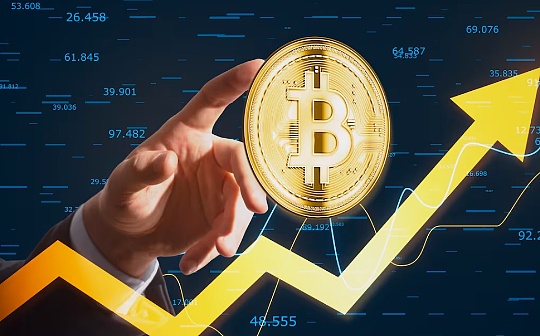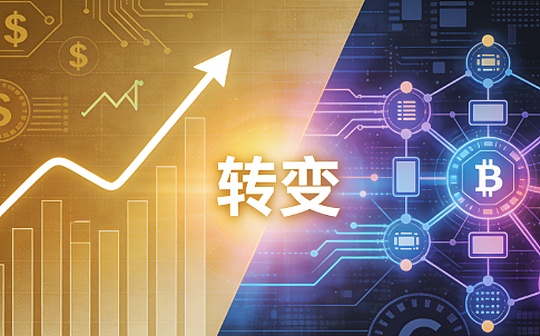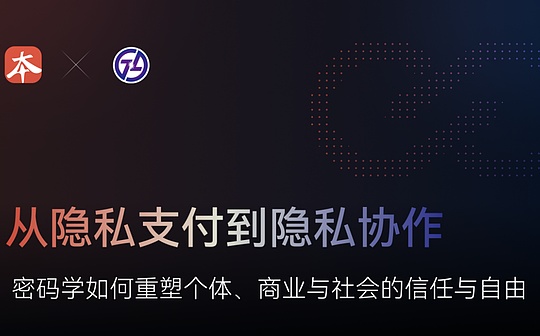
Source: Coalition Greenwich; Compiled by: Tao Zhu, Bitchain Vision
The next year can be said to be the most unpredictable year.Geopolitics are complex and U.S. regulatory policies are uncertain.Although the U.S. stock market seems unable to stop rising and interest rates can only fall, we know that neither of these things is a foregone conclusion.
Thankfully, some trends are still everywhere: transaction electronicization, focus on workflow automation, increasingly transparent markets, and of course artificial intelligence and machine learning (AI/ML).While we don’t explicitly put it on our list, the impact of AI/ML will be reflected in almost every trend we will focus on in 2025.It is now and will continue to be a huge catalyst for financial market innovation in the coming years.With that in mind, here are the trends our team will focus on in 2025:
1. The influence of the ETF market is further expanded
ETFs have become the smartphones of the market – they can do almost everything.Every year, more stock and corporate bond investments are transferred from mutual funds to ETFs, which is inevitable.It is also natural for institutions to use these ETFs as cash management/liquidity/helding tools.
But asset managers and owners have now found that ETFs are a great distribution tool for almost everything: private credit, bitcoin, Ethereum, CLO, money markets, municipal bonds, Treasury bills—the list is getting longer and longer.Of course, there must be some confusion in this, and some solutions are looking for problems.But if managers have assets that require investors (such as private credit), then ETFs carefully constructed in a model portfolio can get a brand new pool of funds easier than traditional methods.
Most retail investors do not need to add more “alternative investments” to their investment accounts, and institutional investors are already able to use them.But improving access (and liquidity) to all-round investable assets is a good thing for institutional investors and (qualified) retail investors.
2. “Smarter, faster”
To be a top market maker, you still need to be faster than others.Microwave, shortwave or satellite connection is required to deliver market data and orders around the world at (close to) speed of light.If you are the fastest and first to enter the market, your trading logic doesn’t need to be unique to make money.But over the past five years, the number of such companies has dropped drastically as data and transaction links violate the laws of physics.
For others, the point now is to be smarter and faster.Of course, being smarter is subjective.Practically combining the most creative people with as much computing power as possible is what major trading companies and hedge funds do.Speed is still important and the standards are getting higher and higher.But now, the quantitative strategy to run successfully is to discover unique relevance and market anomalies with predictive AI at hyperscale operations and make profits before others have the chance to figure out what you have done.
3. Matching buyers and sellers becomes more efficient (and complex)
Major stock markets, U.S. Treasury bonds, foreign exchange, and an increasing number of investment-grade corporate bonds (etc.) are electronic trading.While our research shows that electronic trading will continue to grow, the rate of change will slow to varying degrees as each market matures.However, maturity does not mean a lack of progress.The past and present tell us that the future will be full of continuous innovation in electronic transactions.While innovation does not always increase electronic trading volume, it will make trading more automated, efficient and productive for investors and traders.
The new stock alternative trading system (ATS) shows that even one of the most electronic markets in the world has new tricks.The U.S. Treasury market has announced a victory in electronic trading and has begun to face more complex challenges.The growth in electronic trading of corporate bonds does not come from more RFQ volumes, but from full-to-all agreements, portfolio trading and modern auctions.The result is stronger market liquidity.
Technology does not create liquidity, but it does tap into liquidity that is otherwise unavailable.The core of these solutions is often very complex, but thanks to EMS, user interface designers, and algorithms, traders can see only magic without knowing the complexity of the cause.
4. The pressure the upstart puts on the incumbent is ruthless
The disruption of existing businesses by startups is as old as the business itself, and this attempt has always been in the capital market.Among our top market structure trends to watch for in 2022, we point out that startups in the pandemic era have stepped out of stealth mode, ready to provide solutions for the transformative world.For those companies that have gone through a tough market cycle in 2022, the results of these efforts are becoming increasingly obvious.
ATS is eroding market share on the market, non-bank market makers are taking market share (and customers) from big banks, and capital market fintech companies are doing these two things, and more.These agile newcomers are leveraging cutting-edge technologies, innovative business models and customer-centric approaches without being affected by traditional technology and operational complexity.
But remember—there are reasons why an existing business is an existing business.Their size and experience tend to keep them ahead, even if they aren’t as flexible.Of course, they can and often acquire these innovative emerging businesses.Who is the big winner?No matter who wins, customers can see more favorable prices and products.
5. U.S. regulation becomes more unpredictable
The only thing that can be sure is death and taxation – well, maybe just death.While many people think they know what will happen to the capital market under the new Trump administration, few people really know it.We agree with the following assumptions: Many of the SEC’s proposed but unpassed rules will expire or be re-established; Treasury and repurchase liquidations will fall into the latter category, at least the implementation timeline will be delayed; crypto markets will be more relaxedRegulation and obtain regulatory clarity; many pending cases against the SEC will be dropped or won by the plaintiff.
The Republican victory is not the only regulatory changes that affect the securities industry.The U.S. Supreme Court ruling on Chevron reduces court respect for executives and could trigger a new round of challenges in the formulation of rules from the SEC, Commodity Futures Trading Commission and other financial regulators, involving from ESG to digitalAssets and the future of event contracts.The court’s increased scrutiny of the SEC’s actions could lead to further challenges, especially with some of the latest rules of the SEC.
6. Derivative market trading and innovation continue to be popular
The demand for derivatives seems to be endless.Traditional futures contracts tracking interest rates and stock markets set a record volume in 2024.The event contract officially came into effect in the United States and trading volume surged before the election.Bitcoin and ETH futures trading volumes have grown, stock options have become mainstream, and 0DTE contracts have driven trading volumes to rise further.There will only be more in the future.
Institutional traders and investors will always drive most market trading volume, but it is worth noting that retail investors fully enter the futures market.More crypto-related ETFs will lead to an increase in trading volume of crypto ETF options.Credit futures have been trying for over a decade, but there are signs that the market is finally ready for these well-crafted tools.Regardless of the outcome, new competition in the U.S. interest rate futures complex will only benefit the end user.All of this will be unfolded against the backdrop of reduced regulatory red tape, which could speed up approval of new products.
This supply and demand dynamic is driving investment in market infrastructure.Post-transaction processing technology (often overlooked by more front-end tools that generate return on investment) is gaining due attention to ensure that market growth is not hampered by inefficiency and unnecessary operational risks.Investors are expected to join faster, position transfers will be more efficient, and profit optimization will receive renewed attention.
7. Market data supply and demand are still not met
Our research shows that market participants once again expect to spend more on market data in the coming year.Like your grocery bill, inflation plays a role—but it’s not the real story.Whether entering a new country, a new asset class, or a new investment strategy, the first step is always to acquire new data.While supply doesn’t need to grow to keep up with demand (you can sell the same data source at will), the data available for purchase is still expanding (e.g., alternative data, encrypted data) as traders and investors become increasinglyWork hard to find advantages in existing and new markets.
The data itself is just the first step in this journey.New delivery mechanisms (e.g., cloud for real-time market data), better analytics (AI anyone?), and tools that make this data actionable on the trading desk are key investments in supporting more market data demandsfield.None of these are one-size-fits-all.While speed is important for some traders, historical data may be more important for others to test their strategies.This is why market breadth and delivery mechanisms are crucial to any market data business today.
Market data business cannot withstand recession.A market downturn may mean a decrease in customers in the short term, as the capital pool shrinks and underperforming strategies will be shut down.But ultimately, without market data, institutional trading and investments cannot be made, meaning that the long-term spending chart will only move up and to the right.
8. Forced repurchase and liquidation promotes innovation and competition
Despite changes in Washington’s leadership, the SEC’s authorization to liquidate U.S. Treasury repurchase transactions is a rule that should be adhered to.We and our research participants believe that this will generate net benefits for the market, although the development costs and short-term complexity of market participants must be addressed.The repo market is one of the most important markets of all financial markets, so it is reasonable to inject some standards and additional risk management processes into the market.
Authorization will also bring innovation.Clearing and more standard product terms make electronic transactions easier, which will lead to increased transaction volumes for existing businesses and new entrants who may smell opportunities.In turn, trading mechanisms may become smarter, drawing inspiration from innovations used in other parts of the electronic fixed income market.
These same market standards and trading mechanisms can also open the market to new buyers and sellers.It is easier for those with cash on hand to generate returns, and it is easier for those with strategies to deploy cash, which will inject more liquidity into the entire market.
9.TradFi and DeFi love story is getting stronger
Trading cryptocurrencies through blockchain, trading bonds through ETFs is an established fact, but now things have changed: we can trade cryptocurrencies through ETFs (as well as futures and options), and trading bonds through Ethereum.DeFi companies see opportunities for TradFi assets, but perhaps more interestingly, TradFi companies are introducing access to TradFi assets through the DeFi mechanism.
It is undeniable that all this looks a bit repetitive on the surface.Since the significance of Bitcoin is that you can trade it directly outside the financial system, why do you need to trade Bitcoin through ETFs?Likewise, money market funds can be easily accessible to anyone with a brokerage account.So why have crossover?
Many traditional investors want to enter the cryptocurrency market but would rather open a new account without any effort – it is easier to store it in their existing taxable or tax-free accounts.The same is true for the DeFi investors in this industry (yes, they exist).Putting your on-chain stablecoins (i.e. cash) into tools backed by large asset managers holding U.S. government debt can not only generate revenue, but also store these funds safely in the digital ecosystem.
It is hard to predict whether all finance will turn to DeFi in the next decade, or whether the two worlds will eventually coexist in a more seamless connection.But the love story between TradFi and DeFi must have just begun.
10. Investment in operational and compliance technologies continues to grow
Operations and compliance professionals have long been told to do more with less money.Post-trade spending is more like a gopher game than a long-term strategic investment.Since you can spend money on developing a new execution algorithm that produces significant returns in the first year, why spend money on a new settlement system?
We understand that it is important to spend money and make money.But if the foundation is weak, it is impossible to make money.Those who closely follow operations and compliance infrastructure understand that the goal is not just to reduce costs, but to scale up, reduce risks and achieve strategic goals.That’s why mainframes give way to the cloud, anomaly alert give way to AI monitoring, margin management spreadsheets give way to portfolio management systems that help optimize collateral.
Industry initiatives such as T+1 and the upcoming Treasury Liquidation Authorization force existing technologies and processes to change and improve.These investments not only speed up processing speeds, but also increase the value the backend provides for the front end.Better post-trade data means portfolio managers can understand risks more accurately and in real time, while smart compliance checks can ensure capital flows to a greater extent and avoid regulatory accidents.








